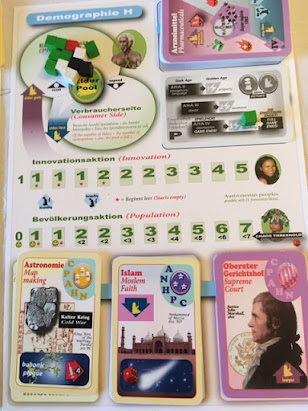One of my biochemistry colleagues was telling me about students being confused in class about the meaning or significance of delta-G (the change in free energy) in thermodynamics. Part of the problem stems from using ‘spontaneity’ to describe reactions with negative values of delta-G. In thermodynamics, spontaneity has a narrow meaning. It tells us the direction that the chemical reaction is likely to proceed, all things being equal (i.e., no other external factors are present to putz with the system). Importantly, delta-G does not indicate how quickly the reaction might take place.
In present-day usage, ‘spontaneous’ is used to refer to something ‘suddenly’ happening, which seems to imply it happens quickly. But historically (from the Latin spontaneous), it meant “occurring without external stimulus, proceeding from an internal impulse” (according to this etymology website). The historical definition fits with the narrow meaning I mentioned above. I take great pains to emphasize to my G-Chem students that delta-G does not tell you about the rate or the kinetics of a chemical reaction. I do this multiple times throughout the semester like an old nag; this is from experience – students so quickly forget and mix up thermodynamics and kinetics.
When I discuss delta-G, I try to get the students to think about it from more than one perspective. Since it is an energy term, a reaction with a negative delta-G is lowering its energy, thus becoming more stable. This is energetically favorable. We also discuss why G is the (Gibbs) free energy, defined as the maximum energy available to extract (non-PV) work from the system, after paying the entropy debt. I also introduce students to the terms endergonic and exergonic to describe reactions with positive and negative delta-G values. Furthermore, delta-G under standard (or reference) conditions can be related to the equilibrium constant. That’s a lot of stuff. No wonder the students can sometimes get confused.
This made me wonder if I can just delete the use of the word ‘spontaneous’ from the vocabulary of thermodynamics. If we didn’t use it, students wouldn’t trip up. But words don’t exist in a vacuum. I may not use it. But a textbook might. Or the internet surely does (which is where students are looking up most of their information), and all sorts of errors and confusion proliferate from this. Hence, I surmise that my best bet is to keep doing what I’m doing: emphasize why the word ‘spontaneity’ is confusing (and that students should be careful), teach them terminology that is used for historical reasons, use multiple conceptual ways of getting students to think about what delta-G means, and repeat, repeat, repeat.
Delta-G is particularly important to chemists and biochemists. But it comes from constituent parts: delta-H, the change in enthalpy; and delta-S, the change in entropy. While students have a sense of what energy means (even though it’s a slippery concept in truth), the words enthalpy and entropy are gobbledygook that we chemists infuse in meaning. Entropy is particularly trippy because there are multiple ways to think about it. But even enthalpy trips you up because its relation to ‘heat’ energy comes from calorimetry, and to make matters more confusing, heat is a verb and not a noun. Most reactions are not done in a calorimeter and we’re not measuring thermal energy being absorbed or released by a chemical reaction. Yet we retain the words exothermic and endothermic to classify whether these reactions have negative or positive values of delta-H. No wonder students have to do a lot of mental work keeping all this straight.
Early in the semester, I stress to the students the challenge of defining a cross-cutting ‘big’ concept such as energy or life. The way we get at the meaning of these concepts is through lots of examples. Hence, after calculating delta-S, the change in (nebulous) entropy of a chemical reaction, I recite what the value may signify. Is the system getting more ordered or disordered? Is there more or less available motion? Are there more arrangements or fewer arrangements? Is there a larger or smaller dispersal of thermal energy? Are molecular energy-level spacings getting closer and more densely packed? Is the ‘quality’ of the energy (in terms of ability to manipulate it further) getting worse? Hopefully by constantly repeating these mantras, the concept slowly takes root and the word takes a meaning that fits the circumstances.
I hardly ever use the word ‘spontaneous’ in regular everyday conversation. I might say ‘suddenly’ or ‘quickly’ or ‘without warning’ but I reserve spontaneous only for its thermodynamic context. I didn’t consciously do so, but I suppose that in making the effort not to confuse students, I subconsciously practiced the separation of meanings. But language and terminology evolve, and we adapt to bring new shades of meaning to words that we use. As someone who teaches G-Chem and P-Chem on a regular basis, I am hampered by the archaic and foreign words that have historically lodged into my field. It is still incumbent on me to ensure students know what to do with these words when encountering them in the internet wild. But at the same time, these words are used to get at large cross-cutting concepts that have no simple definition.
There may be a better solution, but for now I’m stuck with thermodynamic terminology. It is useful and powerful, when the students understand the models or constructs behind these words. Science is all about constructing (conceptual) models to understand the natural world, and to make useful predictions with these models, they should employ the language of mathematics. Without these underpinnings, we’d be wading through a morass of speculation, vagueness, and ignorance.












